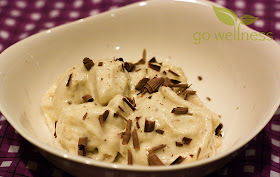Photo Credit: Michelle Loy. Copyright 2011. All rights reserved.
We are heading into strawberry season, and I couldn't be more excited. I love berries, especially when they're in season. I love to get those fresh, bright red strawberries from the strawberry farm stands that will start popping up soon. This recipe would be perfect for those strawberries! I must admit that when I was a kid I used to love fruit roll-ups. Yes, I did! It's been a long time since I've had one though. This inspired my desire to try to make my own. This recipe doesn't take a lot of prep time, but there is a bit of wait time. However, the wait is well worth it. My kids have so much fun checking on the fruit leather with me, and of course, enjoying what they helped me make, too. Try it and let me know how it works for you. Enjoy!
Strawberry Fruit Leather
{Print this recipe}
Ingredients:
2 c strawberries, washed and stemmed
1 Tbsp honey
Photo Credit: Michelle Loy. Copyright 2011. All rights reserved.
Directions:
1. Preheat oven to 200F.
2. Place berries and honey in a blender. Puree until smooth.
3. Line a baking sheet with parchment paper. (This is very important as I initially made a mistake using wax paper, which sticks.) Spread the puree evenly over the parchment paper, about 1/4-1/8 inch thick. (It should form a rectangular shape that comes within about 1-2 inches from the edges.)
Photo Credit: Michelle Loy. Copyright 2011. All rights reserved.
4. Dry in the oven for about 3-4 hours. Drying time can vary depending on: the juiciness of the berries, the oven, and the humidity in your kitchen. To check for dryness: 1) Make sure there are no visible dark spots on the leather; 2) Press the center of the leather with your finger and check for indentation. If there's no indentation, it's dry.; 3) Pull the leather from the edges. If it's dry, it will pull away from the parchment paper easily.
Photo Credit: Michelle Loy. Copyright 2011. All rights reserved.
5. Once cool, use kitchen shears to cut the leather into 4 strips. Then roll each one up and enjoy or store in a glass jar with lid.
Photo Credit: Michelle Loy. Copyright 2011. All rights reserved.
Serves: 4
Nutritional Information:
Calories: 39 Carbohydrate: 10 g Fat: 0 g Protein: 0.5 g Cholesterol: 0 mg Fiber: 1.5 g Sugar: 8 g (3 g added from honey) Sodium: 1 mg
Excellent source of vitamin C.




















